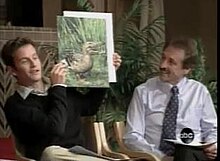If thousands and millions of instances of different caterpillars came and only the one with the snake look survived as a process of natural selection, wouldnt some with the subtle variation compared to this still be there? assuming thousands or hundreds or even millions of iterations took place it is a statistical improbability that the previous iteration which were somewhat similar to this have not survived and only this one survived only as a result. The question again becomes that say there were hundreds of iterations or even 10s of iterations before it, what is the statistical probability that the lone survivor of this natural selection, the past iterations of which we haven't even seen ends up looking entirely like a predator which other animals hide from or stay away from due to its looks. Its not only a bit like a snake. it has developed into looking EXACTLY like the predator.
I think mutations do occur but I don't think its alone with only natural selection for the evolutionary process or in other words it doesn't explain fully the evolutionary process. Take the polar bear for example. Why are the polar bears white. why not different iterations of blue or green, and if there were, is there any left historically? The ice being a perfect preservant has no trace of any yellow or black polar bears. If going by the mutations only driving evolutionary process, we would have small polar bears, bigger polar bears, medium sized polar bears but no variant fossils in that region exist in the ice.
Evolution does exist but if you go by subtle mutations theory accompanied by natural selection, every creation would have millions of variations and one of them would survive BUT we would have historical proof of not just a few variations but each created species having thousands of variations if you go by mutation theory and natural selection alone, but we don't we have very very few and very slow variations of the same species which some of which are still arrived and just named as a different version like Cats, which is extraordinary because nature is as it is said blind. it does not know how something should survive it lets the creatures surival take its own course of survival. We would have 100s and 1000s of different creations being created and born at a rapid pace and dying at a rapid pace if mutation of only natural selection as it is explained is used at its faced value.
if you let nature take complete control, it does not have control. It will make 1000s of variations and a few would survive, but the crux of the equation is, that for the same species and for it be natural selection, where are the 1000s of variations beyond the current form. This is why I think people say guided evolution because for someone to say guided evolution but nature has complete control is an oxymoron because nature itself wouldnt be able to control the variants in the beginning, if it would control it we would have 1000s of variants that the initial nature mutation takes place




